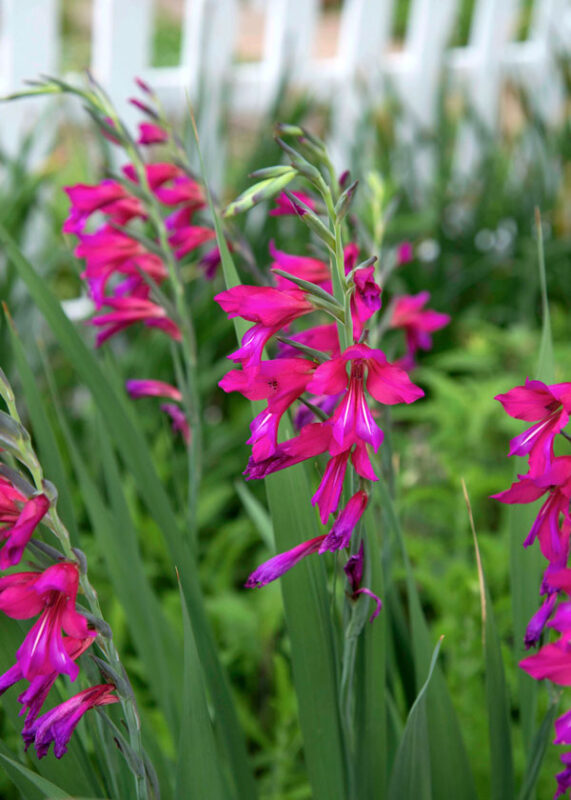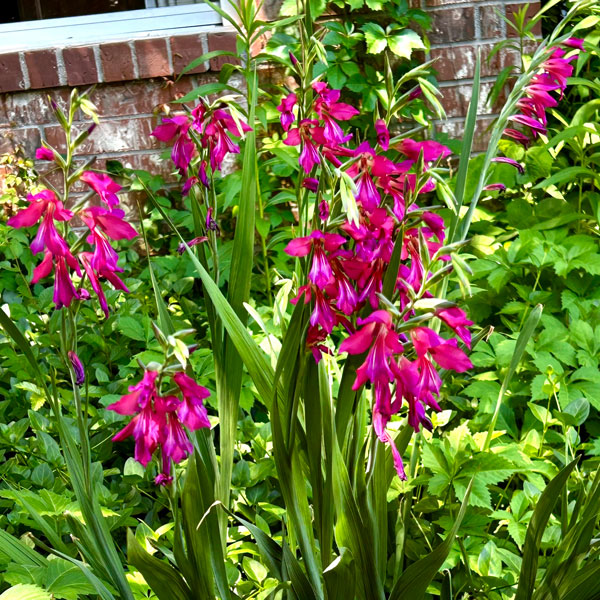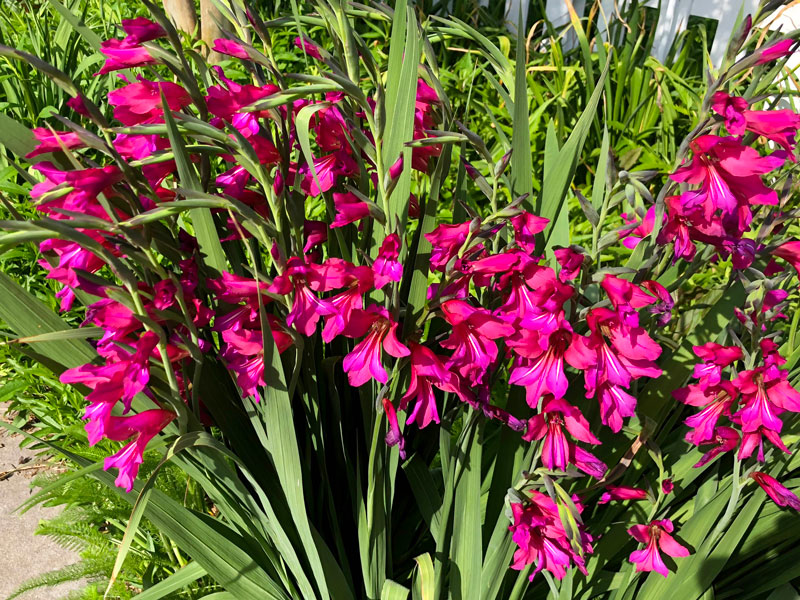Bygone Byzantine gladiolus
Here’s an understated perennial for almost any Texas garden – one that establishes strong clumps and keeps coming back for decades, even when it’s essentially been abandoned.

History of the plant…
It’s assumed that Byzantine gladioli were grown in monastery gardens hundreds of years before the plant was introduced to Western Europe in the 16th and 17th Centuries. Early on, it was admired for its durability and ease of culture – more so than its larger hybrid cousins used in floral gardens and designs.
It made its way to the United States through European immigrants and seed catalogs. It was modestly popular in the Northeast, but interest in it has grown steadily over the decades in the Gulf South because it was observed to establish and even naturalize. It is a mainstay of heirloom gardens and historic settings.
It’s safe to say that Byzantine glads are old-time favorites, perhaps the greatest perennial that almost no Texan grows. Let’s lay out the facts.
What you’ll want to know…
Scientific name: Gladiolus communis subsp. byzantinus
Common name: Byzantine gladiolus or Byzantine glads
Native region: Mediterranean regions, southern Europe, Turkey and the Middle East in general (the old Byzantine Empire)

Annual/Perennial: perennial, from small corms
Height: 18-24 in.
Flower color: magenta with a touch of purple
Blooming time: mid- to late April
Hardiness Zones: 7-10
Light preference: best in morning sun with shade in afternoon
Moisture preference: consistently moist – never dry for prolonged periods
Time to dig and divide: fall, but best if left undisturbed for many years
Planting depth and spacing: 3-4 in. deep, but cluster corms only a couple of inches apart for best landscape show.
Notes…
• In all respects, this is a half-sized version of florist gladioli. As a result, it rarely needs to be staked unless it’s in a windy location.
• Leave the foliage in place until it yellows, then turns brown by early summer.
• One of the less common “bulbs” (actually corms), so start looking for sources early. Buy carefully or you may end up with inferior, under-sized corms.
Difference between a “Bulb” and a “Corm”
A “bulb” is an underground stem with fleshy, scale-like layers surrounding a central bud. The base of the bulb features a cluster of roots. Think of an onion as your typical bulb.
A “corm” is an enlarged underground stem that stores food to be used while the plant is dormant. Most corms are spherical and flattened in shape. They are solid and do not have scales or fleshy leaves. As the plant grows, it uses up the stored food and the old portion of the corm is replaced by new tissue on top. Gladioli are perhaps the most common examples of corms, but that still doesn’t guarantee that anyone will know what you’re talking about when you haul out these new facts.
Ha! What’s a “Gladiola?”
If you want that answer, click through to this great little story.

